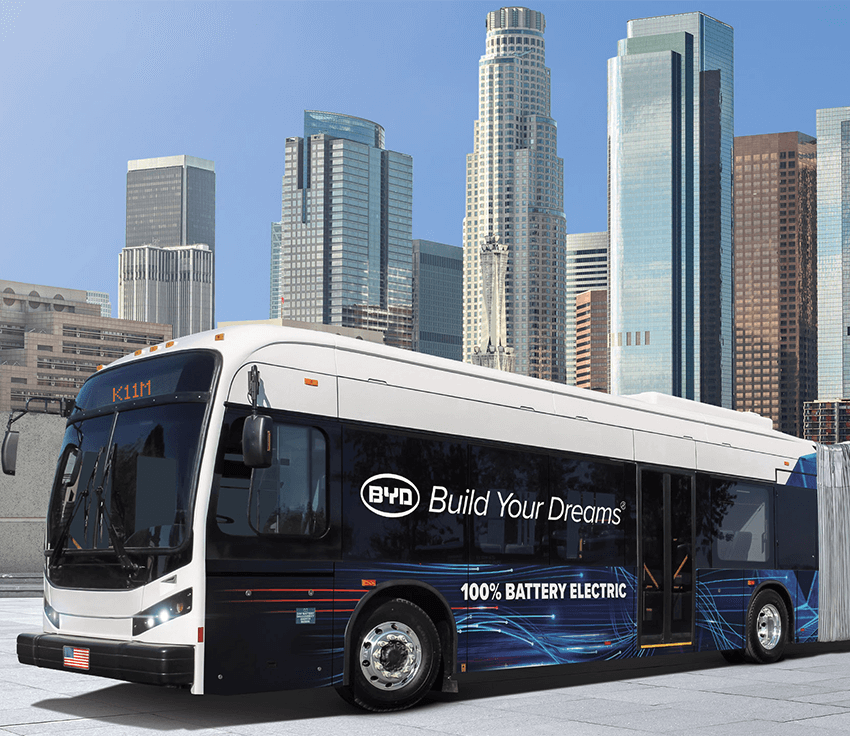In the fast-paced world of urban transportation, electric buses have emerged as transformative players in the push for sustainable mobility. As cities worldwide strive to reduce carbon emissions and improve air quality, BYD’s latest electric bus model is set to redefine the landscape of urban mobility in 2023. With cutting-edge technology and impressive capabilities, this new release from BYD underscores the pivotal role electric buses play in creating greener, more efficient public transport systems. This article will explore the innovative features of BYD’s latest offering, its impact on urban transport, and how it stacks up against competitors.
Unveiling BYD’s Game-Changing Electric Bus
Revolutionary Design and Features
BYD, a leader in the electric vehicle industry, continues to set benchmarks with the launch of its latest electric bus. This model showcases a futuristic design, increased passenger capacity, and enhanced energy efficiency. Key features include:
- Extended Range: With a single charge, the bus can travel up to 250 miles, thanks to its state-of-the-art lithium iron phosphate battery, which is known for safety and longevity.
- Smart Technology Integration: Equipped with advanced telematics, the bus provides real-time data on battery efficiency, route optimization, and passenger load, ensuring smoother operations for transit authorities.
- Passenger Comfort: Enhanced seating, climate control systems, and noise reduction technology make commuting a more pleasant experience.
Environmental and Economic Impact
The environmental benefits of BYD’s electric buses are significant. According to a report by Bloomberg Green, transitioning to electric buses can reduce urban transport emissions by up to 70%. Moreover, electric buses offer economic advantages:
- Reduced Operating Costs: Electric buses have lower fuel and maintenance costs compared to diesel buses.
- Government Incentives: Many countries offer subsidies and tax breaks for adopting electric vehicles, making the initial investment more attractive.
How BYD Stands Out in the Electric Bus Market
Comparative Advantages
In the competitive landscape of electric buses, BYD’s latest model holds distinct advantages:
- Battery Technology: Unlike competitors such as Tesla and Rivian, BYD focuses on lithium iron phosphate batteries, which offer superior safety and longevity.
- Global Reach: With operations in over 50 countries, BYD leverages its extensive network to deliver customized solutions for diverse urban transit needs.
- Proven Track Record: BYD’s commitment to innovation is backed by over a decade of experience in electric bus manufacturing, ensuring reliability and performance.
Competitor Analysis
To better understand BYD’s market position, consider the following comparisons:
- Tesla: Known for its cutting-edge tech, Tesla is primarily focused on passenger cars, with limited offerings in the bus segment.
- Proterra: While Proterra offers high-performance electric buses, its market presence is largely concentrated in North America, unlike BYD’s global footprint.
- Volkswagen Group: Entering the electric bus market with its ID.Buzz, Volkswagen emphasizes nostalgia over BYD’s focus on efficiency and technology.
Practical Tips for Urban Planners
Integrating BYD Electric Buses into Urban Transport
Urban planners considering the integration of BYD electric buses should note the following:
- Charging Infrastructure: Ensure the availability of fast-charging stations at strategic locations. BYD buses are compatible with both rapid and overnight charging systems.
- Route Analysis: Utilize smart technology to analyze routes for optimal energy consumption and passenger convenience.
- Government Partnerships: Engage with local governments to leverage incentives and collaborate on sustainable transport initiatives.
Where to Purchase and What to Compare
- Purchasing Options: BYD buses can be procured directly from the company’s regional distributors. It’s advisable to compare warranty options and after-sales services.
- Key Comparisons: Evaluate aspects like battery life, passenger capacity, and total cost of ownership against competitors to make informed decisions.
Looking Ahead: The Future of Urban Mobility
As cities continue their transition towards sustainable transport solutions, BYD’s latest electric bus represents a significant step forward. By reducing emissions and offering cost-effective operations, these buses are poised to become integral components of urban transit networks. As more cities adopt electric buses, we can anticipate improvements in air quality, noise pollution reduction, and overall urban living conditions.
In conclusion, BYD’s latest electric bus is more than just a vehicle; it’s a catalyst for change in urban mobility. By embracing innovative technology and sustainability, BYD sets a standard for others to follow. For city planners and transit authorities, the question isn’t whether to adopt electric buses, but how quickly they can make the transition. Join the conversation—how do you see electric buses transforming your city? Share your thoughts and let’s drive toward a cleaner, greener future together.
This blog post provides a comprehensive overview of BYD’s latest electric bus, highlighting its impact on urban mobility in 2023. Through detailed analysis and practical tips, readers gain insights into the benefits and considerations of integrating electric buses into city transport systems. The engaging conclusion invites readers to participate in discussions about the future of sustainable urban mobility.

